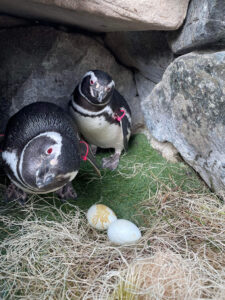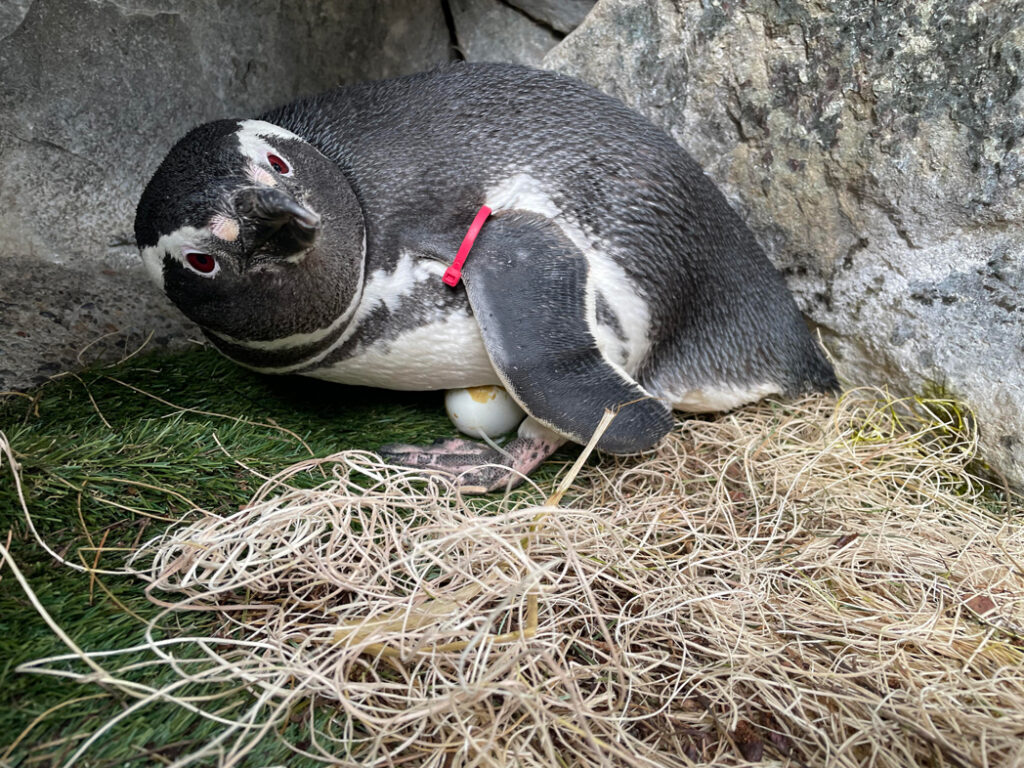It’s that time of year again! Our Magellanic penguins have found their mates and are ready for nesting. In April, keepers observed our penguin pairs snuggling in their nests. It wasn’t much longer before we got a glimpse of the eggs being kept warm.
Each year, keepers prepare Penguin Point for nesting season. They will add long grasses throughout their habitat so pairs can begin gathering materials and building their nests. We’re expecting three of our pairs to lay eggs. So far, 2 of the 3 expected pairs have both laid 2 eggs and we’re continuing to watch the last nest.
Nesting and Hatching
The attentive parents take turns incubating the eggs to keep them warm and switch off every few days. Each penguin parent has a bare patch on their lower abdomen called a brood patch that allows their body heat to help keep the eggs warm.
If the incubation is successful, chicks will hatch by May to early June. It takes around 38-42 days for the eggs to hatch. New chicks in our penguin colony would make this the seventh consecutive year of hatchings!
Typically, the penguins have the same mate each nesting season. Males attract mates by “braying” like donkeys; when a female responds, he walks around her in a circle patting her with his flippers. Mated pairs will also hit their bill tips together to bond.
Once chicks arrive, they’ll be hidden for their first few weeks, keeping warm and safe beneath their parents. The chicks will periodically emerge for feedings when the parents give them a “seafood slushie” (regurgitated fish) they’ve already eaten.
The hatching of penguin chicks is possible through the zoo’s participation in the Association of Zoos & Aquariums’ Species Survival Plan® (SSP) managed breeding program for Magellanic penguins. Magellanic penguins are native to the South American shores of Argentina, Chile, Uruguay, and Brazil. Several factors threaten them in the wild, including the proliferation of plastics in the ocean, spills of oil and other hazardous materials, and overfishing.
